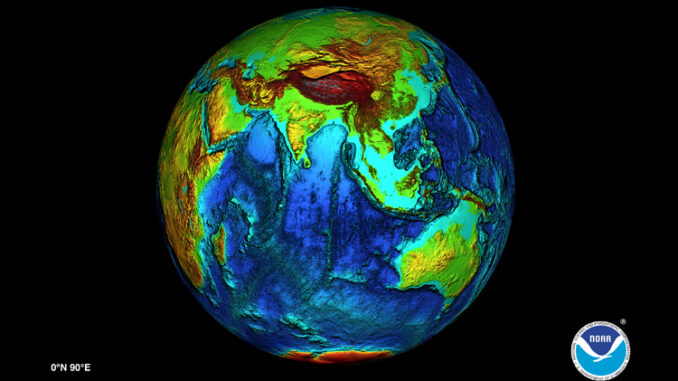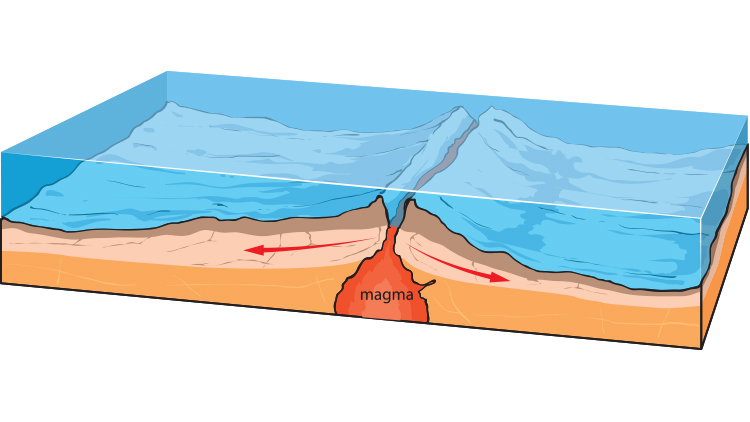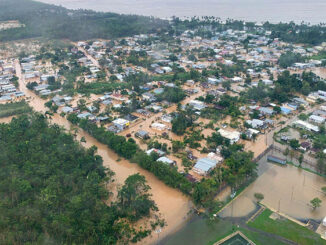
Most people think of Earth as a sphere, but that is not exactly accurate. Experts describe its shape as more of a “lumpy potato.” It is flatter at the poles and bulges around the equator. In addition, some parts of the planet have a higher or lower density [amount of mass per unit volume] than others. Because the pull of gravity is affected by mass, this means that some parts of our planet have more or less gravity than others.
In 1948, researchers found that the Indian Ocean has a giant “gravity hole.” In this area, the gravitational pull is weaker than normal because Earth’s mass is lower. Because of the weaker gravitational pull, the sea level in this area is 100 meters lower (328 feet). Until recently, this mysterious gravity hole could not be explained.
The theory of plate tectonics explains that Earth’s outer layer is made of huge plates of rock that move slowly over time. The continents and oceans rest on these plates so their locations have changed over time. As the plates move, the density and structure of the different parts of the planet also changes.

Geologists [scientists who study Earth’s materials and structure] from the Indian Institute of Science think they have an explanation for the gravity hole. In a recent study, they used computer models to show how the area might have formed over the last 140 million years. They found that rising magma [molten rock] beneath the ocean in the area of the gravity hole could explain its presence. The magma is low in density. The researchers believe that the rising magma was caused by an ancient oceanic plate being pushed deep inside Earth. This would push the low-density material closer to Earth’s surface.
What Do You Think? What else would you like to know about Earth’s structure?
Photo Credit: (t)NOAA/NGDC, (b)EreborMountain/Shutterstock



